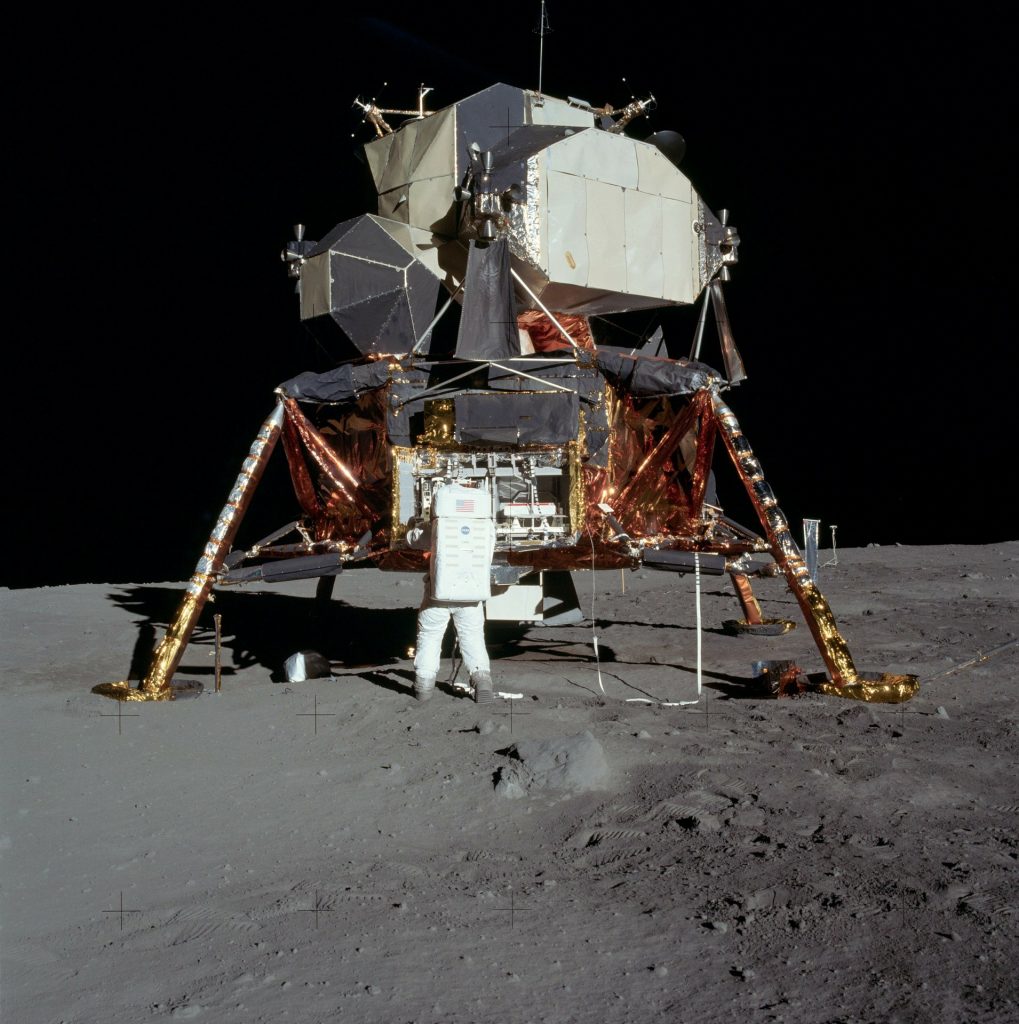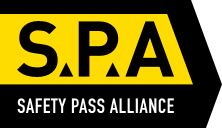
Sending men to the moon and back posed many medical challenges in 1969 – and not just for the health of the astronauts themselves. So how did NASA deal with fears about the astronauts bringing a ‘lunar plague’ back to Earth? And what other sorts of medical scrutiny did pioneering astronauts Neil Armstrong, Buzz Aldrin and Michael Collins face? Dr Laura Dawes explains
Would going to the moon spell the end of life on earth? That sounds far-fetched today with the benefit of what we now know, but in 1969 the answer was “unlikely, but maybe”. The question revolved around whether the moon harboured exotic microbes. If astronauts unwittingly brought germs back, and humans had no immunity to them, the result could be a pandemic as devastating as bubonic plague in 14th-century Europe or smallpox in the Americas in the 16th century. “We can conceive of no more tragically ironic consequence of our search for extra-terrestrial life,” concluded space scientists.
- Small steps: How NASA prepared for the first moonwalk
- The history of the moon landing: everything you need to know
Geologists, however, pointed out that the likelihood of lunar life was extremely low: the moon is washed with UV radiation and wafted with solar wind; it has no atmosphere, no water, and swings through extremes of temperature. “If you really wanted to try to design a sterile surface,” NASA geologist Elbert King said, “this was it.”
Nonetheless, “moon germs” couldn’t be ruled out and the consequences of a lunar plague were potentially disastrous. The combined might of the Public Health Service, the Department of Agriculture, the Fish and Wildlife Service, and the rest of the world via the UN, demanded that Apollo 11 undertake strict quarantine precautions. It was imperative to avoid “adverse changes in the environment of the Earth resulting from the introduction of extra-terrestrial matter,” as the UN Outer Space Treaty put it.
A three-week quarantine
Precautions kicked in as soon as the command module Columbia splashed down off the coast of Hawaii. The astronauts opened the hatch and a navy frogman dressed in a BIG – a full-body “biological isolation garment” with air-filtering mask – tossed in three more BIGs and then retreated upwind for the Apollo crew to get dressed. The crew then climbed into a life raft and washed down their BIGs with a solution of sodium hypochlorite. They sealed up Columbia’s hatch and cleaned that down as well, in case any moon germs had escaped.
Then the astronauts, still wearing their BIGs, were flown by helicopter to the aircraft carrier Hornet and ushered straight into what NASA termed a Mobile Quarantine Facility (MQF). This was, in fact, a converted Airstream campervan, with its wheels taken off and had a filtered air exchange. All the water and waste was also collected for special treatment. Safely inside the MQF, Armstrong, Aldrin and Collins were allowed to take off their BIGs, chat with President Nixon through the little back window of the campervan, and fill out their customs declaration forms. In answer to the question “Any other condition on board which may lead to the spread of disease?” the crew wrote “TO BE DETERMINED.”
The Airstream MQF was just the first part of an onerous three-week quarantine for the astronauts. Transferred back to Houston, they moved into the Lunar Receiving Laboratory (LRL). This was a more spacious facility than the campervan (it had a gym and a bar) but was still environmentally isolated. And it wasn’t just the three Apollo astronauts in there: they were joined in quarantine by the two doctors examining them, and the engineer who had fetched the data and the moon rocks from Columbia. He had also wiped the module clean with more biocide.
- 6 women in science history you (probably) didn’t know about
- Forgotten science: 7 of the strangest scientific theories in history
Part way through the 21 days, Armstrong, Aldrin and Collins had some surprise new housemates: geologists who had been working with the lunar rocks when their special vacuum-chamber gloves developed leaks. The rocks themselves were in quarantine too, kept at all times in a sterile vacuum chamber.
Everyone in the LRL was tested and watched closely for signs of exotic illness. Other than Neil Armstrong suffering a slight ear problem which cleared up by itself, the astronauts did not become sick. But the confinement, and being prodded and poked, and the endless games of cards, “quickly became oppressive”. The quarantine requirements were abandoned after the third lunar landing when it was clear that the geologists had been right: the moon was lifeless.
Apollo’s medical programme
There was certainly no love lost between the Apollo astronauts and the doctors: flight physicians had the power to ground an astronaut or have a mission aborted. And the health requirements were rigorous. They started even before the astronauts were recruited. Applicants to the space programme underwent a barrage of tests to ensure they were in peak condition and perfect health. If they were accepted into the programme, an astronaut repeated the tests every year in the month of his birthday. Before their mission, the Apollo 11 crew were extensively tested again four months out, with daily medical exams in the month before lift-off. Any illness or injury at any time had to be reported and astronauts couldn’t have dental work done in the three months before launch, in case air bubbles became trapped in the treated tooth and caused problems under pressure changes.
Medical scrutiny didn’t end with leaving earth either. During the mission, the astronauts wore a network of biosensors stuck to their skin. These constantly fed back information on heart rate and breathing to the flight physician. At the point when Armstrong radioed that “the Eagle has landed” (with only 20 seconds worth of fuel left in the tank), his heart rate was 150 beats per minute, compared with his normal rate of 75.
- Back on Planet Earth: what world did Neil Armstrong leave behind in 1969?
- From Sutton Hoo to Rosa Parks: 50 giant leaps in history
So Neil Armstrong’s heart rate is now public knowledge, but how much of an astronaut’s medical situation should be revealed to the public? The question of medical privacy had come to a head during the Apollo 8 flight, when the commander, Frank Borman, became very sick. His companions cleaned up globules of vomit and diarrhea floating through the cabin. (Pilot Bill Anders said that it reminded him of chasing butterflies.) Borman didn’t want to discuss his condition with mission control because everyone could listen in to the open channel: “I’ll be damned if I’m going to tell the whole world I had the flu,” he said. (He probably hadn’t got the flu but ‘space adaptation sickness’, a condition related to motion sickness and provoked by moving about when weightless. Borman was the first NASA astronaut to experience it, although cosmonauts were already familiar with the condition.) Only by noting his symptoms on the tape that recorded data when the spacecraft was on the far side of the moon could Borman get medical help without the world listening in. Subsequent Apollo missions, including Apollo 11, included a closed-loop communications channel for the flight surgeon to talk to the astronauts in private.
This closed-communication channel on the Apollo 11 mission has become fuel for conspiracy theorists who see it as evidence either that the moon landing was faked (the channel was how they organised the hoax) or, the moon landing was real (the channel was how Armstrong told mission control about meeting aliens!)
In fact, the channel was how Armstrong and Aldrin discussed taking anti-diarrheal Lomotil tablets during the moon landing so they wouldn’t have to defecate while in the Eagle. Defecating in Apollo spaceships was unpleasant, involving plastering a paper top-hat-shaped contraption to one’s rear and, in the absence of gravity, using one’s hand to assist the faeces away – no wonder the astronauts preferred to be ‘bunged up’.
The whole team also took motion sickness tablets (a combination of scopolamine and dextroamphetamine –the amphetamine countering the drowsy effect of the scopolamine) in preparation for splashdown. However, they mistakenly only took half the dose. Columbia landed upside down, and the crew were tossed around while the airbags inflated and turned them the right way up. All three had to fight against being sick when they eventually got out. As Aldrin explained: “It was one thing to land upside down… it would be quite another to scramble out of the spacecraft in front of television cameras, tossing our cookies all over the place.”
Risk of catastrophe
The mission, as the world knows, was a success – but Aldrin, Armstrong and Collins knew that there had been a real risk of catastrophe. Plans were made for that medical contingency as well. Michael Collins, circling the moon in Columbia, wrote that his “secret terror” was not a sudden explosion. It was that Armstrong and Aldrin would be stranded on the moon, either because the Eagle had been damaged on landing or because the ascent engine wouldn’t fire, and he would have to return to earth alone.
“If they fail to rise from the surface, or crash back into it, I am not going to commit suicide,” Collins wrote. “I am coming home, forthwith, but I will be a marred man for life and I know it. Almost better not to have the option I enjoy.”
- The Space Race: The Cold War rivalry that put humans on the Moon
- Did NASA really pick the brains of the Tower of London armoury when designing the first space suits?
NASA and the president’s office also made preparations for that nightmare scenario. On NASA’s advice, speechwriter William Safire prepared a speech for Nixon to give in the event that “fate has ordained that the men who went to the moon to explore in peace will stay on the moon to rest in peace”. NASA would close communications to the lander; the oxygen supply would run out and Aldrin and Armstrong would die. A clergyman would conduct the burial rites as per burial at sea, with the astronauts’ souls committed to “the deepest of the deep”. So when Armstrong radioed that “We’re off!”, the moment was one of profound relief for everyone. Nixon’s speech – “that there is some corner of another world that is forever mankind” – would never need to be said.
Dr Laura Dawes is an award-winning historian, author and broadcaster, with a speciality in the history of science and particularly the history of medicine.
History Extra



















